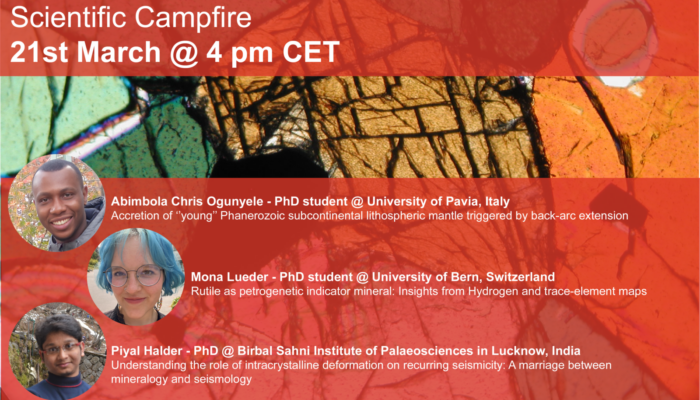Just a few days and EGU24 will start (Are you ready?)!! We are sure you will discover new amazing researches about Geosciences, but, remember, EGU is also social events and networking! The ECS team of GMPV (and other Divisions) will be at the GA, and you can find us with short course and events around the ACV. Here is a list of where and when you can find us! Sunday 14 April Get ready for the Open ...[Read More]
EGU GMPV ECS Campfires – Thursday March 21st @ 4pm CET
The second edition of the Geochemistry, Mineralogy, Petrology and Volcanology division’s ECS talks – the Campfires – of 2024 is right at the door and will take place on Thursday March 21st at 4pm CET on Zoom. This edition will be a Scientific Campfire, during which three early career scientists will present their latest work to the community. Our speakers for this edition are: Abim ...[Read More]
Call for a new X (Twitter) Account Manager!!
The Geochemistry, Mineralogy, Petrology and Volcanology division of the European Geosciences Union is looking for a new X (Twitter) Account! We are a group of 16 early career scientists working on GMPV topics. You can have a look (and learn more) about our team and what we do during the year here! We are looking for an Early Career Scientist (ECS) who can share all the activities of our group and ...[Read More]
Meet our EGU-GMPV Science officers – take 2
As we approach the EGU General Assembly, we remember that there are a number of people working hard to ensure that sessions on our favourite topics are secured. This also ensures that topics of interest to as wide a range of scientists as possible are covered. This is why the GMPV Division has representatives from the various fields of geochemistry, mineralogy, petrology and volcanology. Last time ...[Read More]




